Condiment Alchemy: How to Transform the Mundane Into Mealtime Magic
Without looking, do you have any idea what’s in your refrigerator door?
Honestly, me neither. I think there’s some ketchup. I’m certain there’s fish sauce, soy sauce, some form of mustard, sriracha, and a tub of Duke’s mayo. No doubt there are at least three half-empty jars of capers and various jams. Beyond that, your guess is as good as mine.
A lot of folks have next to no idea about the residents of their refrigerator door because they’re not cycling through them on a regular basis.
We’re all guilty of stocking the basic condiments and then buying duplicates of them. Or you buy an unfamiliar ingredient for a specific recipe, and there it remains on the shelf until eventually you toss it a year later, unsure why you even have it. Or you decide at the office you want chicken piccata tonight, so you grab a jar of capers on the way home, forgetting that you still have capers left from the last time this happened two months ago. So, great, congratulations—now you’re rich in capers.
It doesn’t have to be this way.
You’ve heard the saying “the secret’s in the sauce,” right? OK, so here’s the secret: A refrigerator door that looks like a chaotic mess to the untrained eye is the key to making chef-level meals at home. Pardon me for generalizing, but one of the main differences between the average home cook and a professional chef is that the pro knows how to make magic with those seemingly limited-use ingredients in the fridge door. And they know that leveraging those bottles, tubes, and jars like some sort of condiment alchemist is the difference between a ho-hum meal and one that the family will ask for again next week.
There are two basic tenets of condiment alchemy: the elementary principles of flavor mathematics (i.e. the right amount salty + the right amount of sweet = tasty balance) and an adventurous spirit. Flavor math, you can learn; the taste for adventure, you develop through unhesitant experimentation.
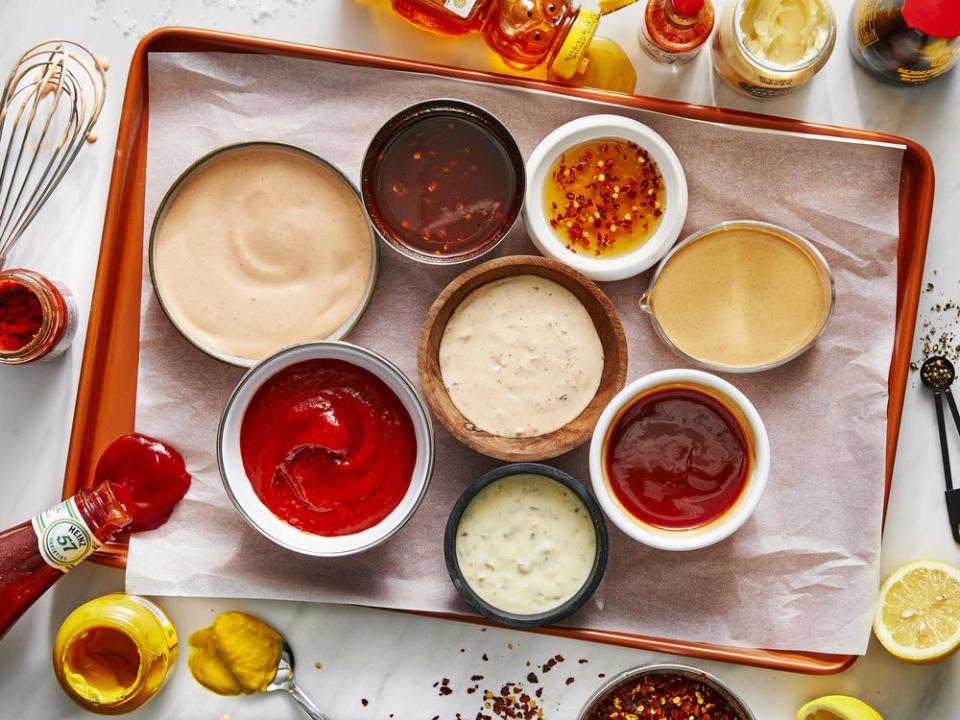
Know Your Condiments
The first step in becoming a successful condiment alchemist is learning to look at your assortment of condiments for who they are—beyond their most pedestrian uses and their place in one or two recipes—and what they consistently bring to the table in terms of flavor and texture. (After you’ve checked their expiration date, that is.) Let’s take a quick tour of common condiment shelf residents.
Ketchup: Ketchup has a misguided reputation for being a “kiddy condiment,” but this versatile staple provides body, robust sweetness, acidic tang, rich umami, and roasty depth. From a flavor perspective, ketchup is an incredibly balanced entity in and of itself, which makes it a good base note when you get to mixing.
Mustard: There are plentiful mustard varieties available on supermarket shelves, and generally speaking, they all provide a bright bite of flavor and can often serve as emulsifying agents. In the recipes that follow, we utilize three of the most popular varieties: classic yellow, Dijon, and coarse-grain.
Yellow mustard is the most assertive and sharply acidic of these; meaning, a little bit goes a long way. This mustard is fairly onenote on the flavor front, but is great for delivering to-the-point pungency.
Dijon mustard will provide a bit more flavor nuance, with more of the essence of the mustard seed coming through. Because Dijon is made with white wine, it also contains less vinegar—which means it’s a bit softer on the palate than yellow.
Coarse-grain mustard brings the flavor range of Dijon, along with a pleasant textural presence. While this mustard can deliver lovely body and substance to a sauce, its seediness prevents it from being the best emulsifier.
Mayonnaise: Love it or hate it, mayonnaise is one of the most versatile bases in your condiment collection. Mayo (note: when I say “mayo” here, that does not extend to Miracle Whip) is the perfect blank canvas to take on flavors. It has a bit of acid and a touch of sweetness, but mayo isn’t here to serve as a big flavor player—no, its strength lies in its creaminess and its high oil content. That rich fattiness is what makes a great backbone to support other more powerfully flavorful ingredients.
Sweet Pickle Relish: A jar of sweet pickle relish brings sweet, tang, and texture to the party. Similar to the contrast between yellow mustard and Dijon, plain relish is a bit more in-your-face acidic and one-note, while sweet relish provides a more rounded depth of flavor.
Sriracha: Because it’s made by pureeing hot peppers, sriracha’s heat is backed with a robust sweetness, making it a rich hot sauce that can also serve as an emulsifier.
Mexican-Style Hot Sauce: A hot sauce like Valentina is similar in makeup to other pureed hot sauces like sriracha, but provides a different combination of spices, and oftentimes, an element of smokiness.
Vinegar-Based Hot Sauce: Made by steeping peppers in vinegar, this style of hot sauce provides a punch of straight-up acidic heat. Don’t look to a vinegar-based hot sauce to provide body or serve as an emulsifying agent.
Worcestershire Sauce: Provides an intense hit of salt and umami flavor. The sheer number and variety of ingredients (including everything from anchovies to tamarind) that goes into a bottle of Worcestershire is a strong testament to the complexity of flavor it delivers. Only a little bit of this brewed blend is necessary to add a deep layer of flavor.
Honey: In the world of condiment alchemy, honey is here to contribute sweetness and viscosity, as well as act as a bang-up emulsifier.
Vinegar: It may seem absurd to lump all vinegars together here, but Balsamic aside, they serve a simple purpose—bring the brightness, baby. While different varieties of vinegar certainly come with their own acidic nuances, their grand purpose is to bring balance to deeper, weightier flavor notes. Point being, don’t get too hung up on what type of vinegar you reach for.
Soy Sauce: The world of soy sauce is vast and complex. But for our purposes here, when you think soy sauce, think a simple way of adding saltiness, savoriness, and depth. Like Worcestershire, soy sauce goes through a brewing process; however, it’s not nearly as intense and can be applied with a more liberal hand.
Fish Sauce: Fish sauce brings saltiness, umami depth, and a touch of brininess, but above all else this fermented flavor booster brings the funk. Because of its incredibly potent flavor, you’ll want to pair fish sauce with plenty of acid and sweetness.
Curry Paste: Regardless of color, curry paste contributes a complex layering of robust flavors. The paste is a concentrated compilation of flavorful ingredients, so keep in mind that it’s not a background player. This aromatic and spice-forward concoction provides body and shining personality wherever it goes.
Hoisin Sauce: Made from fermented soybean paste, hoisin is rich, funky, salty, and sweet. A crude comparison would be likening it to a sweetened, concentrated soy sauce. It’s a great emulsifier, excellent for marinating, and works well to round out any number of sauces with a dynamic sweetness.
Tahini: Tahini packs in rich nuttiness, along with roasty, toasty, bitter notes. Within the context of sauces and dressings, it’s best embraced as a background ingredient, rather than a frontrunner, or something you use as a base. Tahini is strong on the flavor front, so excessive amounts aren’t required to make its presence known, and spooning it out generously can lead to a chalky texture.
Sambal Oelek: Think of this as an eye-catching, more texturally intriguing sriracha. Sambal delivers sweet heat along with a bold roasted pepper flavor.
Gochujang: This is a powerful source of concentrated heat; dole it out sparingly. Gochujang’s kick is balanced by a touch of sweetness and toastiness. It contributes body and bold spice.
Use Your Condiments
Here’s the fun part. Now that you know what everyone has to offer, gather a few who bring complementary flavor characteristics, grab a bowl and a few dry spices, and start whisking until you hit a mouthwatering equilibrium. Here are a few ideas from our test kitchen—starting out simple and evolving into the more adventurous—on how to mix-and-match condiments for maximum enjoyment. The results are signature dump-and-stir sauces you’ll come back to again and again.

A rich base of mayo takes on acidic brightness from lime, well-rounded heat from sriracha, and umami-backed sweetness from ketchup to become liquid sunshine. This four-ingredient power sauce is the perfect accompaniment to grilled and smoked meats—spoon it on anything from smoked wings to a grilled pork tenderloin—but would make an equally delicious dip for fries or way to sauce up a sandwich. There’s really no wrong place to spread sunshine.
Get the Recipe: Sunshine Sauce
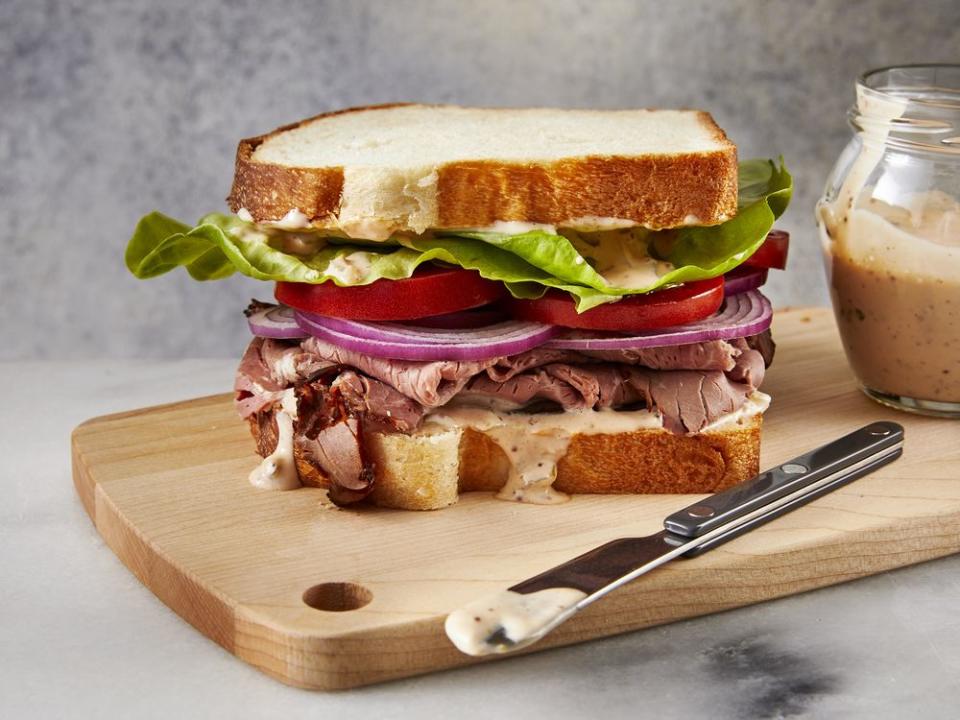
Two important things to know about remoulade sauce: One, it’s not just for seafood, and two, you can easily whip up your own at home. Hitting a finger-licking balance between invigorating brightness and luscious heft, you can find this vibrant fridge-door remoulade residing where creamy, sweet, tangy, and (just a touch of) heat come together. And once you’ve found it, please proceed to slather it onto stacked roast beef sandwiches and po’ boys. Naturally, it’s also welcome alongside platters of steamed shrimp, fried oysters, and the like.
Get the Recipe: Basic Remoulade
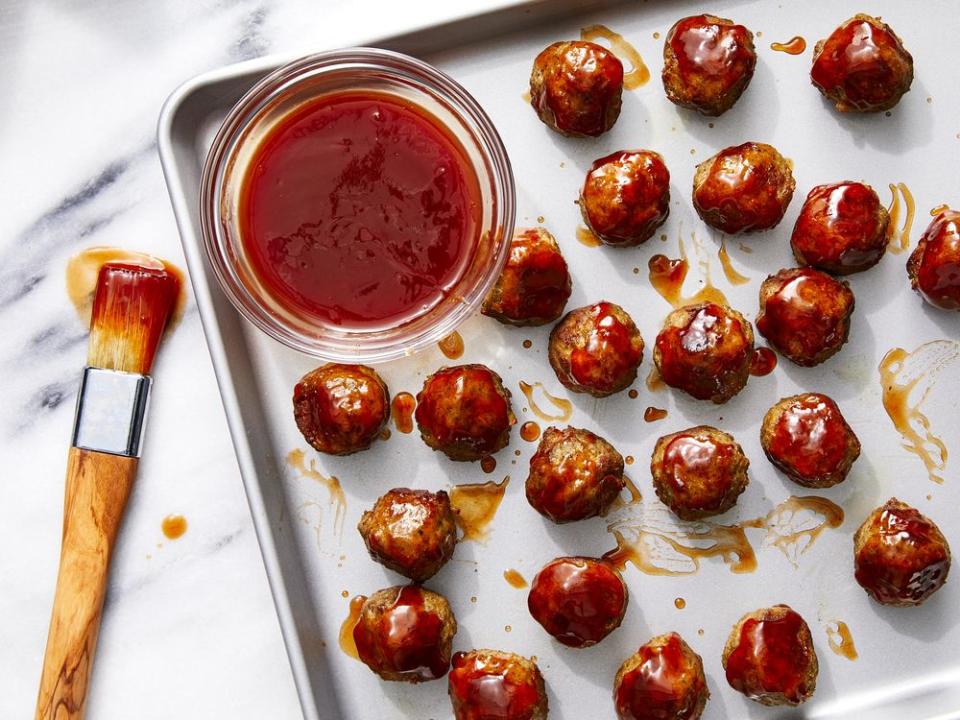
Honey brings the sweet, rice vinegar’s got the sour, soy sauce is packing the savory saltiness, and ketchup brings them all together. This epically easy sweet and sour sauce is great for when you want to whip up a takeout favorite at home, but the fun need not stop there. It’s awesome for everything from glazing cocktail meatballs to serve at your next party to jazzing up your kid’s frozen chicken fingers and fries. Brush it over salmon before roasting, sling it into stir-fried veggies—basically, when any situation that could use a little tangy-sweet personality arises, this speedy sauce has your back.
Get the Recipe: Easy Sweet and Sour Sauce

There are times in this life when you need a touch of something a sweet, spicy, and a little tangy; those times typically coincide with having biscuits, pizza, fried chicken, or something equally fatty in front of you. And that’s where a viscous, sweet-heat drizzle comes in (literally). The lively matrix of honey, apple cider vinegar, and crushed red pepper is exactly what certain dishes need to put them over the top.
Get the Recipe: Chile-Honey Drizzlin' Sauce

If you’ve ever sat down at a restaurant and found yourself completely wowed by the hip, gourmet ketchup you were presented with, now you know how to make your own at home. Red curry paste upgrades your standard ketchup with aromatic flavor and a decent punch of spice, which is tempered with lemon juice. It’s bodacious, it’s bright, and it belongs just about anywhere you’d normally apply ketchup. Your hot dogs, fish fries, and even eggs will all be better for it.
Get the Recipe: Curry Ketchup
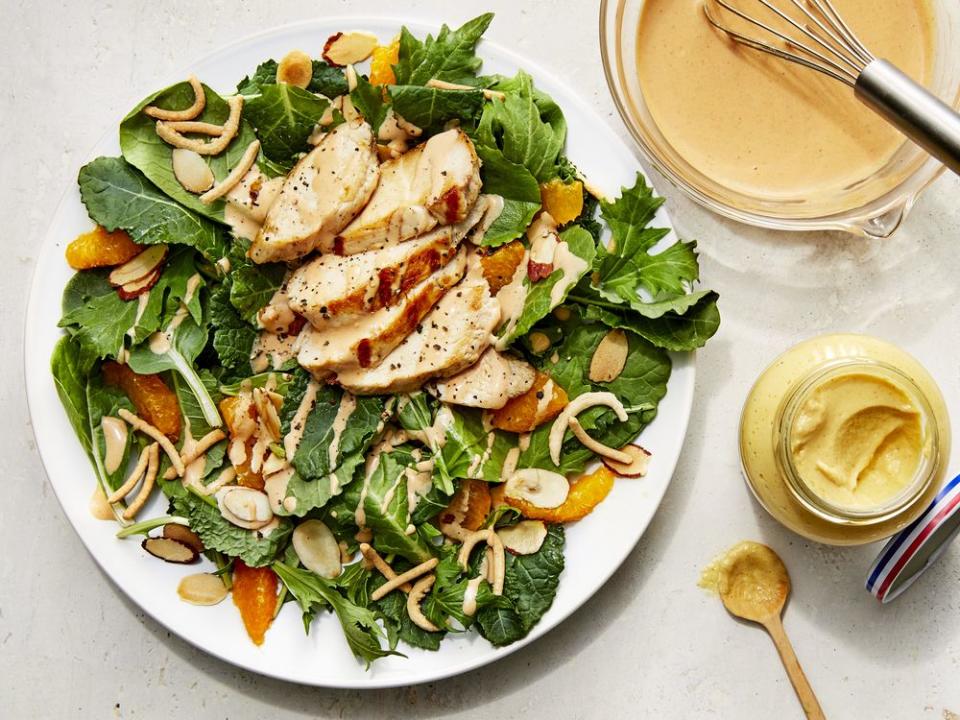
A first glance, this appears to be a nonsensical amalgamation of condiments selected at random. But trust, every ingredient plays an important role in making this a dressing you’re going to want to drizzle over virtually everything. This, my friends, is condiment alchemy at work. Tahini lays a foundation of nutty toastiness, hoisin comes in with a little salt-sweet funk, Dijon brings the brightness, Valentina adds just a kick of heat, and mayo brings it all together into something beautiful. Use it to dress hearty salads and grain bowls or serve alongside grilled chicken or tofu.
Get the Recipe: Creamy Tahini Dressing
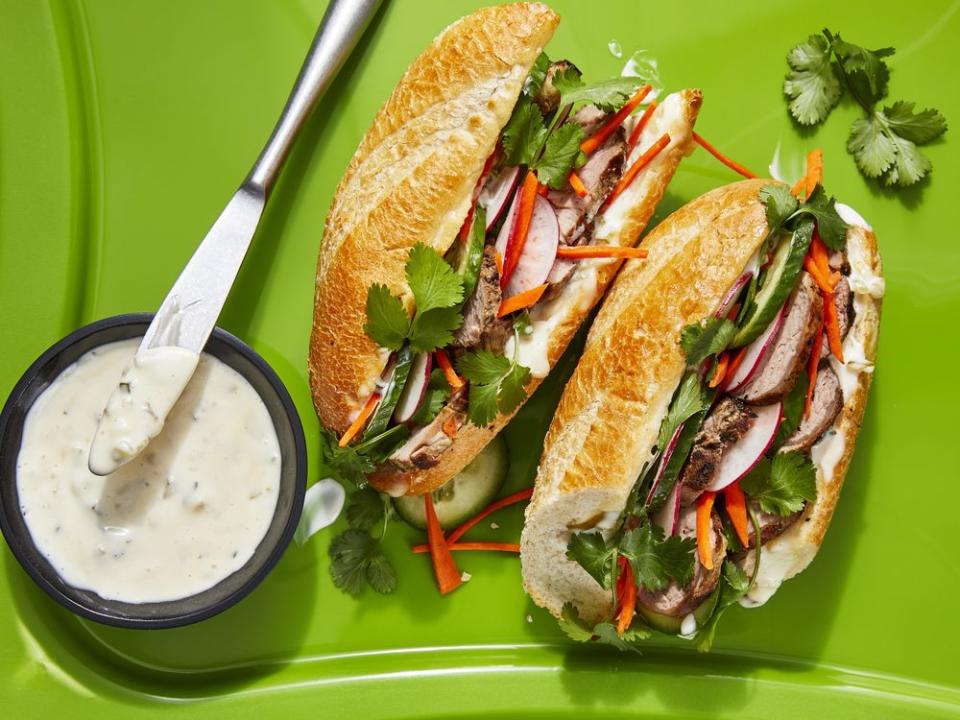
This lively spread is the kind of thing that can turn an average leftovers sandwich into a mouthwatering masterpiece. It combines the bright flavors of pickle and lime with the salty, fermenty funk of fish sauce for an incredibly balanced but bold sauce that’s prime for coating or dipping.
Get the Recipe: Banh Mi Mayo
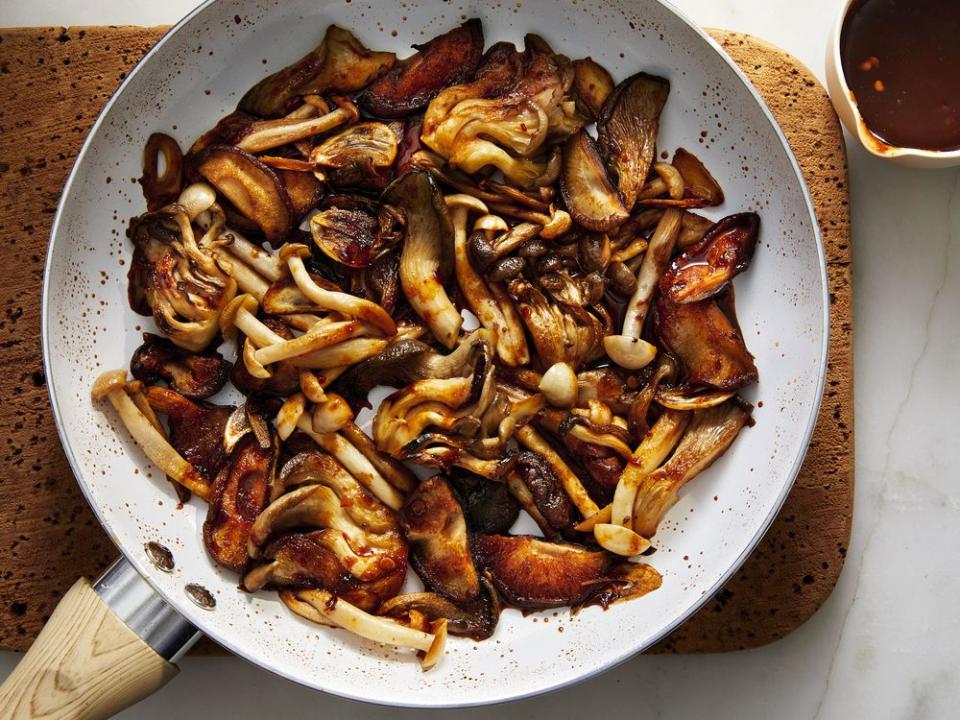
This ultra-savory sauce masterfully harnesses the intensity of some of the most intense members of your condiment collection—Worcestershire, gochujang, and sambal oelek—to provide a raise-the-roof effect on your cooking. Amp up the flavor of anything from roasted chicken thighs to a mixed mushroom saute with a couple spoonfuls. If you’re craving all of the savory but need to cut back the heat, you can reduce or omit the sambal.
Get the Recipe: Spicy Umami Sauce
*Note: A number of the recipes above call for lemon or lime juice, and while you’re welcome to use fresh, we tested using bottled in the interest of keeping with ingredients you’re apt to have on hand in the fridge door. Either works fine!


